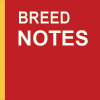EHOs on the prowl at crufts!
Council officers to check if dogs are illegally docked
ENVIRONMENTAL HEALTH officers from Solihull Council are to descend on Crufts this year to check whether docked dogs on exhibition or entered at the show are legally docked, following last April’s tail docking ban.
The ban was introduced as part of an amendment to the Animal Welfare Act, which applies to England and Wales. Only working dogs are exempt from the ban, and these may not be exhibited as ‘show dogs, but only in events where they work, such as the Gamekeeper’s Classes at Crufts. There is no such exemption for traditionally docked breeds in Scotland, which are covered under the Animal Health and Welfare (Scotland) Act.
A number of exhibitors of traditionally docked breeds have expressed their concerns to OUR DOGS about the presence of the Environmental Health Officers (EHOs) at Crufts. One, who declined to be named said: ‘It’s the Nanny State again, interfering in our leisure time activities.
What do these people know about docked breeds? What’s going to happen if they see a dog that they think is illegally docked? Are they going to march into the ring and arrest the owner and seize the dog? I’m appalled that the Kennel Club and the Crufts Committee are allowing this.’ But the simple fact is that they are both obliged to comply.
Amongst the concerns expressed by the concerned parties are:-
* The fact that such action is unprecedented in the history of the show. Did council official check if exhibitors had complied with the legislation banning ear cropping back in 1902?
* Do the EHOs know which breeds are involved?
* Do the EHOs know about the bobtail (tail-less) gene in certain breeds?
* Do they know about exemptions for certain HPRs and breeders with working gundogs and gun certificates?
The senior official in charge of the exercise from Solihull Council’s Environmental Health Department is Esther Atkins, although she was on leave this week when OUR DOGS contacted the council. However, a spokesperson for the department was quick to reassure exhibitors that there was nothing to worry about.
‘The EHO team will be working closely with the Crufts management and will adopt a low-key approach. The EHOs are aware of what breeds are involved and of the appropriate legislation,’ said the spokesperson. ‘The team work very closely with the senior Crufts vet on all such matters.’
Kennel Club Secretary Caroline Kisko told OUR DOGS on Tuesday of this week: ‘ Last year, Solihull Council visited Crufts, as they always do and spoke to us about the Animal Welfare Act. As Crufts takes place on their patch, they have made it clear that they intend to see that the law is upheld. But it’s all very agreeable we have given them as much information as possible on the breeds concerned, the tailless and bobtailed breeds and they are fully aware of these.
‘They have assured us that they will not approach anyone they feel may be in breach of the law without first going to the Crufts office and discussing it with us. They will certainly not enter the rings. The whole approach is to play it cool and we foresee no problems.
‘In any event, it’s highly unlikely that any dog which was born after the docking ban was enacted will have qualified for this year’s Crufts.’
The Kennel Club advice on docking
The law regarding the docking of dogs’ tails changed in Wales on 28th March 2007, in England on 6th April 2007 and in Scotland on 30th April 2007.
Any change to animal welfare legislation in Northern Ireland is in its very early stages at present and lobbying will continue there. Apart from the fact that the legislation came into effect slightly earlier in Wales, the law will be the same for both England and Wales.
While an exemption for working dogs was achieved for England and Wales, there is no such exemption in Scotland. As a result the law will affect competitors and show organisers in different ways in England & Wales, in Scotland and in Northern Ireland.
Inevitably there will be a certain amount of interpretation of the law which will only be made clear if it is tested in the Courts. However the Kennel Club has attempted to clarify the great complexities of the new law, as far as possible, through the following Questions and Answers.
The Kennel Club does not approve of the legislation which has been introduced but it nevertheless has a duty to advise:
Societies whose shows the KC, SKC or WKC licences; Exhibitors and Competitors who attend these shows; Breeders and Judges on how to proceed so as to avoid putting themselves in danger of acting unlawfully.
It is not the intention of the Kennel Club to police the law actively nor to get involved in disputes as to whether or not dogs have or have not been illegally docked or illegally shown. That is a matter for the authorities. The Kennel Club will however be required to follow up any convictions successfully brought under the Acts and will require to discipline proven offenders accordingly under its own Regulations.
The rules are complicated because of the different dates on which they were introduced and because of the slight differences between one part of the UK and the other.
January 31st 2008
Embedded within the lengthy Q&A press release on the Kennel Club website is:-
Q If we decide to continue to charge an admission fee to the public, what do we need to do in order to forewarn exhibitors that they may not be allowed to enter their dogs?
A For shows held in England where the public are admitted on payment of a fee: Such societies should include a statement in the show schedule, entry form and online that “A dog docked on or after the 6th April 2007 may not be entered for exhibition at this show”. By this means it is hoped that any exhibitor of a dog docked either legally or illegally after the 6th April will be aware that they should not enter this show.
* * * * * * * * * * * * * * * * * * * * * * * * * * * * * * * * * * * * * * * * * * * * * * * * * * * *
Breeds affected by the ban are:-
Gundogs Brittany, German Shorthaired Pointer, German Wirehaired Pointer, Hungarian Vizsla, Hungarian Wirehaired Vizsla, Italian Spinone, Large Munsterlander, Spaniel (American Cocker), Spaniel (Clumber), Spaniel (Cocker), Spaniel (English Springer), Spaniel (Field), Spaniel (Sussex), Spaniel (Welsh Springer), Weimaraner. Terriers Airedale, Australian, Fox T (Smooth), Fox T (Wire), Glen of Imaal, Irish, Kerry Blue, Lakeland, Norfolk, Norwich, Parson Russell, Sealyham, Soft Coated Wheaten, Welsh. Utility Miniature Schnauzer, Poodles, Schipperke, Schnauzer. Working Bouvier des Flandres, Boxer, Dobermann, Giant Schnauzer, Neapolitan Mastiff, German Pinscher, Rottweiler. Pastoral Australian Shepherd, Old English Sheepdog, Polish Lowland Sheepdog, Pyrenean Sheepdog, Swedish Vallhund, Welsh Corgi (Pembroke). Toys Australian Silky T, Cavalier King Charles Spaniel, Griffon Bruxellois, King Charles Spaniel, Miniature Pinscher, Yorkshire T.












